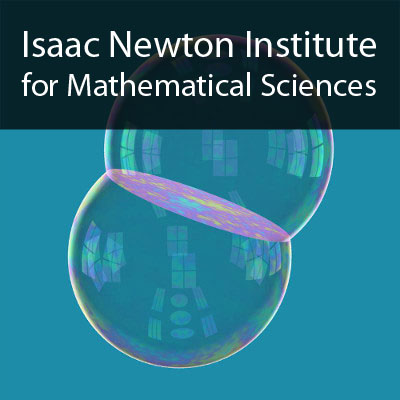Spherical circle coverings and bubbles in foam
23 mins 11 secs,
42.40 MB,
MP3
44100 Hz,
249.73 kbits/sec
Share this media item:
Embed this media item:
Embed this media item:
About this item

| Description: |
Tarnai, T (Budapest University of Technology and Economics)
Thursday 27 February 2014, 11:45-12:05 |
|---|
| Created: | 2014-03-03 09:16 |
|---|---|
| Collection: | Foams and Minimal Surfaces |
| Publisher: | Isaac Newton Institute |
| Copyright: | Tarnai, T |
| Language: | eng (English) |
| Distribution: |
World
|
| Explicit content: | No |
| Aspect Ratio: | 16:9 |
| Screencast: | No |
| Bumper: | UCS Default |
| Trailer: | UCS Default |
| Abstract: | One of the classical problems of discrete geometry is the following. How must a sphere be covered by n equal circles (spherical caps) so that the angular radius of the circles will be as small as possible? In the 1980’s when we started to work on this problem, proven solutions were known only for n = 2, 3, 4, 5, 6, 7, 10, 12, 14, and conjectured solutions for n = 8, 9, 32. The first gaps appeared at n = 11 and 13, for which even suggestions did not exist. We thought that the shapes of bubbles in foam might help. We considered the results of Matzke’s experimental observations, and found that the edge graph of the only bubble with 11 faces and one of the 4 bubbles with 13 faces lead to the best coverings where the Dirichlet cells of the circle system provided the same edge graphs as those of the respective bubbles.
Additionally, we could show that for n = 2 to 12, except 11, the edge network of the Dirichlet cells of the best circle covering is topologically identical to the minimal net formed by the intersection of n soap-film-like cones by a sphere (determined by A. Heppes, F.J. Almgren and J.E. Taylor). In the range of n = 14 to 20, we considered the possible shapes of coated vesicles. These are certain kinds of “bubbles” where a part of the cellular membrane is surrounded by a clathrin basket – a polyhedron. With their help, for these values of n, except n = 19, we could construct the best so far circle coverings of a sphere. In the lecture, we want to survey the results for n = 2 to 20, making comparison with soap-film-like cones, bubbles in foam, coated vesicles, and to compare the best circle coverings with the numerical solutions to the isoperimetric problem for polyhedra with n faces. This research was supported by OTKA grant no. K801146. |
|---|---|
Available Formats
| Format | Quality | Bitrate | Size | |||
|---|---|---|---|---|---|---|
| MPEG-4 Video | 640x360 | 1.94 Mbits/sec | 337.40 MB | View | Download | |
| WebM | 640x360 | 927.31 kbits/sec | 157.35 MB | View | Download | |
| iPod Video | 480x270 | 522.26 kbits/sec | 88.55 MB | View | Download | |
| MP3 * | 44100 Hz | 249.73 kbits/sec | 42.40 MB | Listen | Download | |
| Auto | (Allows browser to choose a format it supports) | |||||

